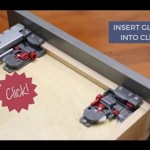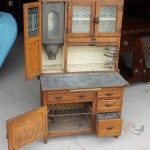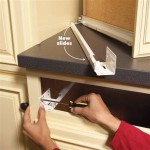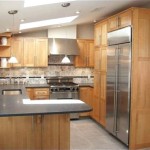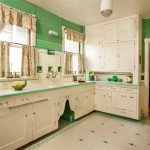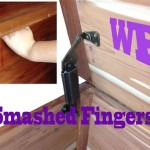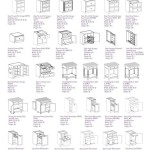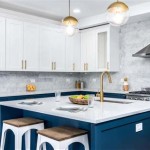Starter Kitchen Cabinet Set: A Comprehensive Guide
Embarking on a kitchen renovation or building project can be a daunting task, particularly when selecting the fundamental components that define both the functionality and aesthetic of the space. Kitchen cabinets are undeniably central to this, serving as storage solutions, workspaces, and visual focal points. For those initiating their kitchen design journey, a starter kitchen cabinet set presents a practical and cost-effective entry point. This article provides a comprehensive overview of starter kitchen cabinet sets, outlining their key aspects, types, selection criteria, and installation considerations.
A starter kitchen cabinet set typically comprises a pre-selected assortment of cabinets designed to fit common kitchen layouts. These sets usually include base cabinets, wall cabinets, and sometimes, a pantry cabinet. The dimensions and configurations are generally standardized, offering a straightforward solution for smaller kitchens, rental properties, or budget-conscious homeowners. While offering less customization than fully bespoke options, starter sets provide a solid foundation that can be enhanced with individual cabinet additions or design modifications as needs evolve.
Key Points to Consider When Choosing a Starter Cabinet Set
Selecting the optimal starter kitchen cabinet set requires careful consideration of several factors. These factors directly impact the functionality, durability, and aesthetic appeal of the kitchen. Evaluating the following points will enable a more informed decision-making process, ultimately leading to a kitchen that meets both practical needs and personal preferences.
1. Cabinet Materials and Construction: The materials used in constructing kitchen cabinets significantly influence their longevity and overall aesthetic. Common materials used in starter sets include particleboard, MDF (Medium-Density Fiberboard), and solid wood. Particleboard is generally the most affordable option but is less resistant to moisture and physical damage. MDF offers a smoother surface for painting or laminating and exhibits better moisture resistance than particleboard. Solid wood, while generally more expensive, provides superior durability and visual appeal, particularly when properly sealed and maintained. The construction method, such as the joinery techniques used to assemble the cabinet boxes and doors, also plays a crucial role in structural integrity. Dovetail joints, for example, are significantly stronger than simple butt joints.
Beyond the core material, the finish applied to the cabinet doors and frames dictates the aesthetic and protects the underlying material. Options include laminate, paint, and stain. Laminate offers a durable and easily cleanable surface, available in a wide range of colors and patterns. Paint provides a versatile option for achieving a specific color palette and can be applied to MDF or solid wood. Stain enhances the natural grain of wood, offering a warm and classic aesthetic. The quality of the finish is paramount, as it directly impacts the cabinet's resistance to scratching, chipping, and fading.
2. Kitchen Layout and Measurements: Accurate measurements of the kitchen space are essential before purchasing any cabinet set. This includes the floor area, wall dimensions, and the location of existing appliances, plumbing fixtures, and electrical outlets. A scaled drawing of the kitchen layout, indicating the placement of these elements, will facilitate the selection of a cabinet set that fits seamlessly within the available space. Starter sets typically come in standard sizes, such as 30-inch or 36-inch base cabinets and 12-inch or 30-inch wall cabinets. Ensure that these standard sizes align with the kitchen's dimensions or can be adapted with filler panels or modifications.
Consider the overall workflow within the kitchen when planning the cabinet layout. The "kitchen work triangle," which connects the sink, refrigerator, and stove, should be optimized to minimize unnecessary steps. Position cabinets strategically to provide ample storage space for frequently used items near the relevant work areas. For instance, place cookware and utensils near the stove, and dishes and glassware near the sink and dishwasher. Careful planning of the cabinet layout will enhance the efficiency and functionality of the kitchen.
3. Style and Aesthetic Preferences: While functionality is paramount, the aesthetic appeal of the kitchen cabinets contributes significantly to the overall ambiance of the space. Starter cabinet sets are available in various styles, ranging from traditional to contemporary. Traditional styles often feature raised panel doors, ornate detailing, and darker wood finishes. Contemporary styles tend to be characterized by flat panel doors, clean lines, and lighter, more neutral color palettes. Transitional styles blend elements of both traditional and contemporary designs, offering a versatile option that complements a wide range of interior design schemes.
The hardware chosen for the cabinets, such as knobs and pulls, can significantly influence the overall aesthetic. Select hardware that complements the cabinet style and finish, while also providing a comfortable and ergonomic grip. Consider the color and material of the hardware, ensuring that it coordinates with other elements in the kitchen, such as the countertops, backsplash, and appliances. Attention to these details will create a cohesive and visually appealing kitchen design.
Types of Cabinets Included in Starter Sets
Understanding the different types of cabinets included in a starter set is crucial for planning the kitchen layout and maximizing storage space. Each type serves a specific purpose and contributes to the overall functionality of the kitchen. Familiarity with these cabinet types will enable a more informed selection process and ensure that the set meets the storage needs of the household.
Base Cabinets: Base cabinets form the foundation of the kitchen and are typically installed directly on the floor. They provide storage space for larger items, such as pots, pans, and appliances. Standard base cabinets are usually 36 inches tall and 24 inches deep, but variations in width are available to accommodate different configurations. Base cabinets can include drawers, shelves, or a combination of both. Drawer base cabinets are ideal for storing utensils, cookware, and smaller items, while shelf base cabinets are better suited for larger items or those that are accessed less frequently. Corner base cabinets, such as lazy Susan cabinets or blind corner cabinets, are designed to maximize storage space in the corners of the kitchen.
Wall Cabinets: Wall cabinets are mounted on the wall above the base cabinets, providing additional storage space for dishes, glassware, and pantry items. Standard wall cabinets are typically 12 inches deep and available in various heights, ranging from 30 inches to 42 inches. The height of the wall cabinets should be chosen based on the ceiling height and the desired amount of storage space. Glass-front wall cabinets can be used to display decorative items or to create a more open and airy feel in the kitchen. Open shelving can also be incorporated into the design to provide easy access to frequently used items.
Pantry Cabinets: Pantry cabinets are tall, freestanding cabinets designed to store food items and other kitchen essentials. They can be either single-door or double-door cabinets, and typically include adjustable shelves to accommodate items of different sizes. Pantry cabinets are particularly useful in kitchens with limited storage space, providing a centralized location for all food items. Some pantry cabinets may also include pull-out shelves or drawers for easier access to items in the back of the cabinet.
Installation Considerations for Starter Cabinet Sets
Proper installation is crucial for ensuring the longevity and functionality of the kitchen cabinets. While some homeowners may opt for professional installation, others may choose to install the cabinets themselves. Regardless of the chosen method, careful planning and attention to detail are essential for a successful installation.
Before beginning the installation process, ensure that all necessary tools and materials are readily available. This includes a level, measuring tape, drill, screwdriver, stud finder, shims, and construction adhesive. Begin by locating the wall studs using a stud finder and marking their locations. These studs will provide the necessary support for the wall cabinets. Use a level to ensure that the base cabinets are installed level and shim them if necessary. Secure the base cabinets to the wall studs using screws. Once the base cabinets are installed, proceed with the installation of the wall cabinets. Use a level to ensure that they are aligned properly and secure them to the wall studs using screws. Follow the manufacturer's instructions for attaching the doors and hardware. After installation, inspect all cabinets to ensure that they are properly aligned and securely attached to the walls.
Safety precautions are paramount throughout the installation process. Wear safety glasses to protect the eyes from debris and use gloves to protect the hands from cuts and abrasions. When using power tools, follow the manufacturer's instructions and take precautions to prevent electrical shock. If unfamiliar with any aspect of the installation process, consult a professional installer. A well-executed installation will not only enhance the appearance of the kitchen but also ensure the longevity and functionality of the cabinets.

Vanity Paks Country Gentlemen Kitchen Bathroom Remodeling Inc

Vanity Paks Country Gentlemen Kitchen Bathroom Remodeling Inc
Kitchen Cabinet Starter Base 60 690 By Royal Fine Woodworking In Newburgh Ny Alignable

Lower Cabinet Organization Starter Kit The Container

Amish Rustic Hickory Kitchen Cabinets 10x10 L Shaped Design

Diy Kitchen Cabinets Vs Home Depot House And Hammer

Kitchen Starter Set Everything You Need For Your First

Kitchen Cabinet Guide Lowe S
7 Piece Starter Set Special South Milestone Kitchens
7 Piece Starter Set Special South Milestone Kitchens
Related Posts

